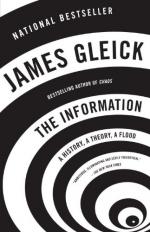
|
| Name: _________________________ | Period: ___________________ |
This quiz consists of 5 multiple choice and 5 short answer questions through Chapter 9.
Multiple Choice Questions
1. The telegraph invented by Samuel Morse and Alfred Vail was based on what function?
(a) Logarithms.
(b) Opening and closing the electric circuit.
(c) The Morse Code.
(d) Capturing electrical impulses.
2. Each square of Turing's imaginary machine would have what coding?
(a) Relay switches.
(b) Programming.
(c) Circuitry.
(d) A 0 or a 1.
3. Eliminating noise in Shannon's model meant looking at language in terms of what factor?
(a) Randomness.
(b) Possibility.
(c) Frequency.
(d) Probability.
4. The early telegraph had trouble functioning under what conditions?
(a) Migratory seasons.
(b) Fog and rain.
(c) Overuse.
(d) Sunny skies.
5. How were phonetic sounds represented in language?
(a) By codes.
(b) By characters.
(c) By numbers.
(d) By images.
Short Answer Questions
1. What results when a closed system's temperature evens out?
2. A new interest in what pursuit arose following the rise of the telegraph?
3. Seventeenth numerical tables were set up so that what factor could be learned about each number?
4. Erwin Schrodinger used the concept of entropy to describe what group?
5. What did Alan Turing reduce human thought to?
|
This section contains 197 words (approx. 1 page at 300 words per page) |

|




